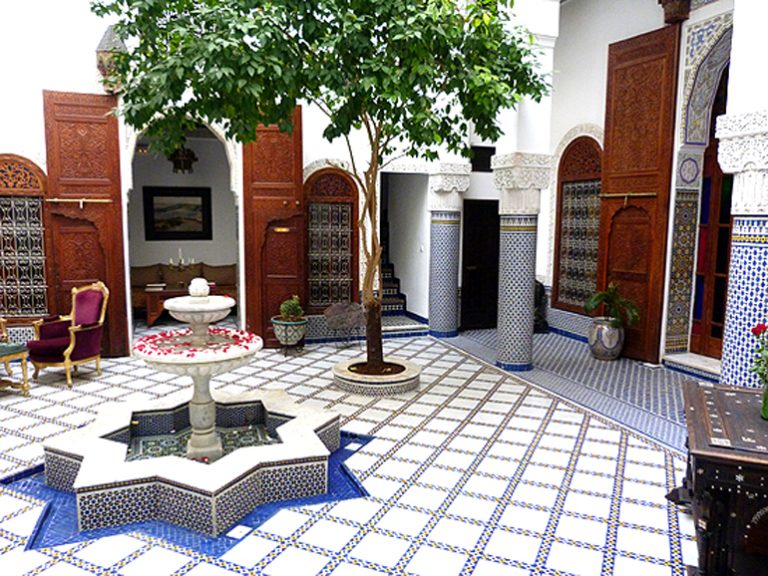Published with permission from LuxuryWeb Magazine
Nestled in the base of the Atlas Mountains, Marrakech is a historic city that encapsulates the essence of Morocco. It boasts the largest and oldest medina in the nation, a UNESCO World Heritage Site.
Navigating through the narrow, serpentine alleys of Marrakech’s ancient quarter, it’s evident that life here has maintained its rhythm for centuries. The muezzins’ calls to prayer, now pre-recorded, still resound five times a day, weaving through the medina as the pulse of commerce throbs unabated. The once vibrant caravanserais, serving as hostels and stables in times past, now house an eclectic array of shops from souvenir sellers to spice vendors, and from butchers to bakers of traditional sweets.

These labyrinthine passages reveal the rich history of numerous grand mansions, originally owned by prominent families and now restored into opulent Riad hotels. Each Riad, with its origins in the Arabic word for “garden,” is a traditional Moroccan house built around an interior courtyard, featuring Andalusian-style architecture complete with geometric tiles, lush plantings, and a central fountain.
RELATED: A Journey Through Morocco: How to Master the Region’s Delicious Culinary Traditions

Success
You are now signed up for our newsletter
Success
Check your email to complete sign up
Historically, Riads were the palatial homes of wealthy merchants or royal advisors, accommodating multiple generations under one roof. These buildings make efficient use of limited medina space by extending vertically, often encompassing several stories with balconies overlooking the interior courtyards. They emphasize privacy, with a singular main entrance and windows that open solely onto internal spaces, not the bustling streets.

In Moroccan cuisine, the tajine is the centerpiece. This unique cooking implement, traditionally made from terracotta, gives its name to the slow-cooked stews it prepares. Filled with a mix of succulent meats and vegetables, these dishes are seasoned with a distinctive blend of spices including paprika, coriander, and the renowned ras el hanout. Tajine dishes are meant to be enjoyed communally, with diners gathering around to share the flavorful meal.

Another cornerstone of local cuisine is Harira, a hearty soup that combines dried legumes like lentils and chickpeas with rich spices and meat, typically lamb. Served commonly at the start of meals or as a standalone dish during Ramadan, Harira is a testament to Morocco’s culinary heritage.

Meals in Morocco often conclude with a selection of fresh fruits, their natural sweetness a perfect end to the dining experience. Mint tea, a staple beverage, is served generously throughout the meal, symbolizing Moroccan hospitality.

Despite modern navigation aids, the convoluted pathways of Marrakech’s medina can easily confound visitors, evoking a sense of ancient mystique and the fanciful allure of flying carpets—a nod to stories from a different part of the world.

For more information about traveling to Morocco, consider visiting the Moroccan National Tourist Office’s website at www.visitmorocco.com.
Visit LuxuryWeb Magazine to see the original article and more.












